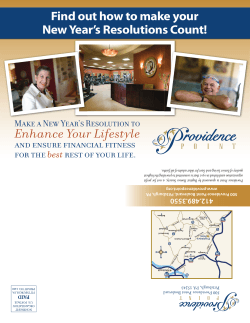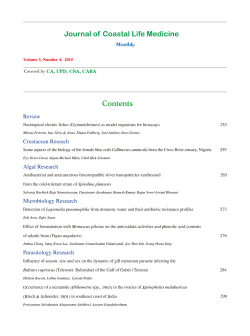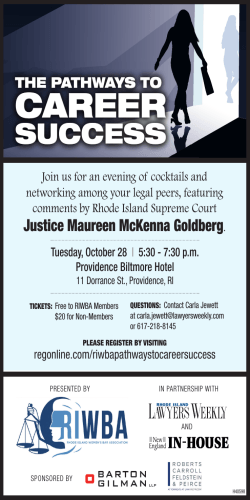
Balancing Development and Conservation along the
Balancing Development and Conservation along the Rhode Island Coastline Jennifer McCann, URI Coastal Resources Center/RI Sea Grant URI / Rhode Island Sea Grant / Coastal Resources Center Narragansett Bay: Rhode Island biggest Jewel Urban, Suburban and Rural Coastal Population in Rhode Island 1790 to 2000, projected to 2030 900,000 Coastal Urban 800,000 Coastal Suburban Coastal Rural 700,000 Total Coastal People 600,000 500,000 400,000 Statewide Planning 300,000 Forecast 200,000 100,000 0 2025 Source: U.S. Bureau of the Census. Graphic by D. Robadue, CRC-GSO-URI 2015 2005 1990 1970 1950 1930 1910 1890 1870 1850 1830 1810 1790 Year Cumulative trends in CRMC assents for new site uses versus intensified use of existing sites in MetroBay SAMP Towns Type A, B, M, W 700 New site use Total 500 400 300 200 100 0 19 70 19 72 19 74 19 76 19 78 19 80 19 82 19 84 19 86 19 88 19 90 19 92 19 94 19 96 19 98 20 00 20 02 20 04 Cumulative assents 600 Intensify site use Year CRMC’s charge: "...to preserve, protect, develop, and where possible, restore the coastal resources of the state for this and succeeding generations….” The MRDP: Maintaining Coastal Character RI Regional Map What’s a SAMP? Public Involvement is Key CRMC Special Area Management Plans Metro Bay SAMP Boundary •Cranston •Providence •Pawtucket •East Providence Proposed Redevelopment More than $600 million in public and private economic investment Current CRMC Buffer Policy • Buffers based on lot size & adjacent water type classification • Native vegetation required in vegetated buffer with minimal maintenance • No public access requirement Better Solution • Revised buffer policy tailored to urban areas that: – Acknowledges the spatial and financial constraints of urban (re)development – Allows flexibility in meeting requirements – Streamlines the permitting process – Reduces variance requests – Accomplishes CRMC’s mission to preserve, protect, develop, and where possible restore coastal resources 15% Vegetation Requirement Street • Sustainably landscaped • May include green roofs, rain gardens, landscaping elements, surface stormwater treatments, etc. • “Appropriate mix” of trees and shrubs, with minimal use of sods and grasses BUILDING SETBACK Shoreline or Coastal Feature • Sloping vegetated revetments may receive credit toward the 15% requirement. 100% Stormwater Management • 100% on-site management of the water quality volume (per the RI SW Quality Manual) • Preference for vegetative treatment (swales, bioretention, green roofs, etc.) and practices that support infiltration and groundwater recharge. http://www.wbdg.org/design/lidtech.php Public Access • Continuous alongshore access. • Arterial (perpendicular) access connects public sidewalk to the alongshore access pathway. • Pervious surfaces. • 2 parking spaces adjacent to access point, and additional space/100’ linear shoreline. • If no public access, applicant must provide mitigation. Urban Coastal Greenway Zone Map Area of Particular Concern Inner Harbor & River Development Residential UCG Compensation • To reduce UCG from standard width, or when a variance is granted, applicant must provide compensation for lost Greenway area. – Metro Bay Regional Habitat Fund – On-site Compensation Measures – Coastal Greenway Credits Shoreline Vegetated Buffers Ideal Buffer (2002) Today (2005) Typical dense shoreline development (no buffers) Metro Bay: “Achilles’ Heel of the Northeast” (FEMA) Surge Height 4.5 m (MLLW) Lower Fields Point Redevelopment Site - Providence r Save the Bay Johnson & Wales Harborside Roger ve Williams A Ha D ide s r u rbo Phillipsdale Landing Redevelopment Site – Rumford, East Providence Bourne Ave Omega Pond Current Uses Other Businesses # 0 Water Dependent 1 $ Water Related "/ Water Enhanced Rail Development Areas SAMP Boundary CRMC’s regulatory tool – water types Current Conditions New Zoning Scenario 390 Acres of Type 6 1145 Acres of Type 6 Proposed Development Areas SAMP Boundary Projects within the boundary require Council assent •10%of NB Waters - Type 6 •Of these 27% are in Metro Bay •Zoning changes CRMC Water Classification Type 1 - Conservation Areas Type 2 - Low Intensity Uses Type 4 - Multipurpose Waters Type 6 - Industrial Waterfront/Com. Navigation result in loss of 615 acres Rezoning of Providence Harbor in accordance with landside plans of Providence and East Providence results in net loss of 755 Acres of Type 6 Waters City of Providence’s vision for the waterfront Contact us to get involved RICRMC: Jim Boyd, 783-7772, jboyd@crmc.state.ri.us URI CRC/RISG: Jennifer McCann 874-6127 mccann@gso.uri.edu http://seagrant.gso.uri.edu/metrosamp/
© Copyright 2025









